There’s something about those artisan bread loaves that you see at bakeries and in fancy grocery stores. They look so beautiful, smell amazing, and taste great, and are a perfect side for soups or salads. This bread recipe will make you a loaf that tastes just as good as those fancy artisan ones you see in the store, and it’s not nearly as hard as you think it is! This recipe uses simple ingredients that you probably have in your pantry already, plus delicious herbs that will fill your kitchen with the most irresistible smell!
Want to try your hand at making other breads? Try our Jalapeño Cheese Bread or our Garlic Star Bread recipes.
Why Our Recipe
- A bread full of garlic, parmesan, and herbs that smells absolutely incredible as it bakes!
- This recipe is perfect for beginner bread makers, with simple steps that produce amazing results.
- We let butter melt over the top of the loaf to produce a rustic looking loaf with the best crust.
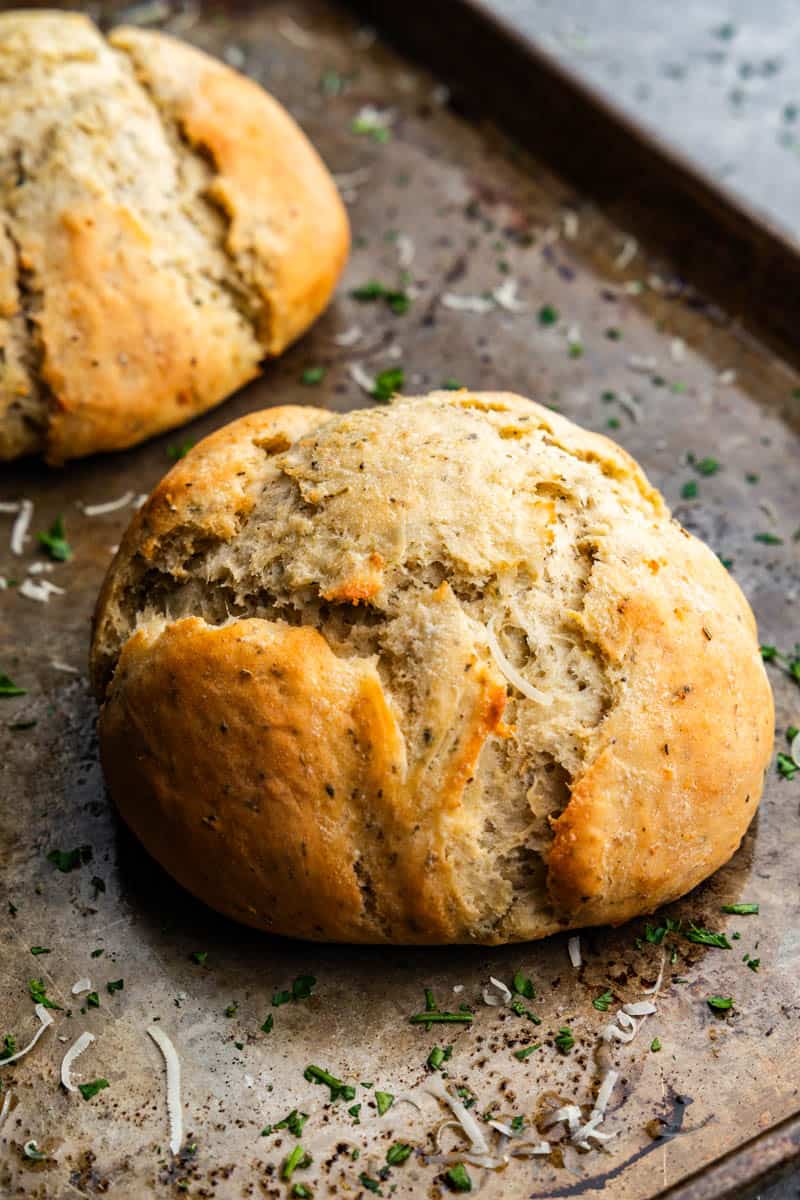
This recipe is adapted from The Craft Patch’s Rustic Rosemary Bread.
Don’t worry if you’re new to bread-making! This recipe is designed for beginners, with easy-to-follow steps and instant yeast to speed up the process. You’ll be amazed at how simple it is to create something so delicious and impressive from scratch. The herbs and cheese and garlic get dispersed throughout the bread to turn it into an almost garlic bread-like loaf. You won’t believe how easy it is to make artisan bread in your own kitchen.
Ingredient Notes
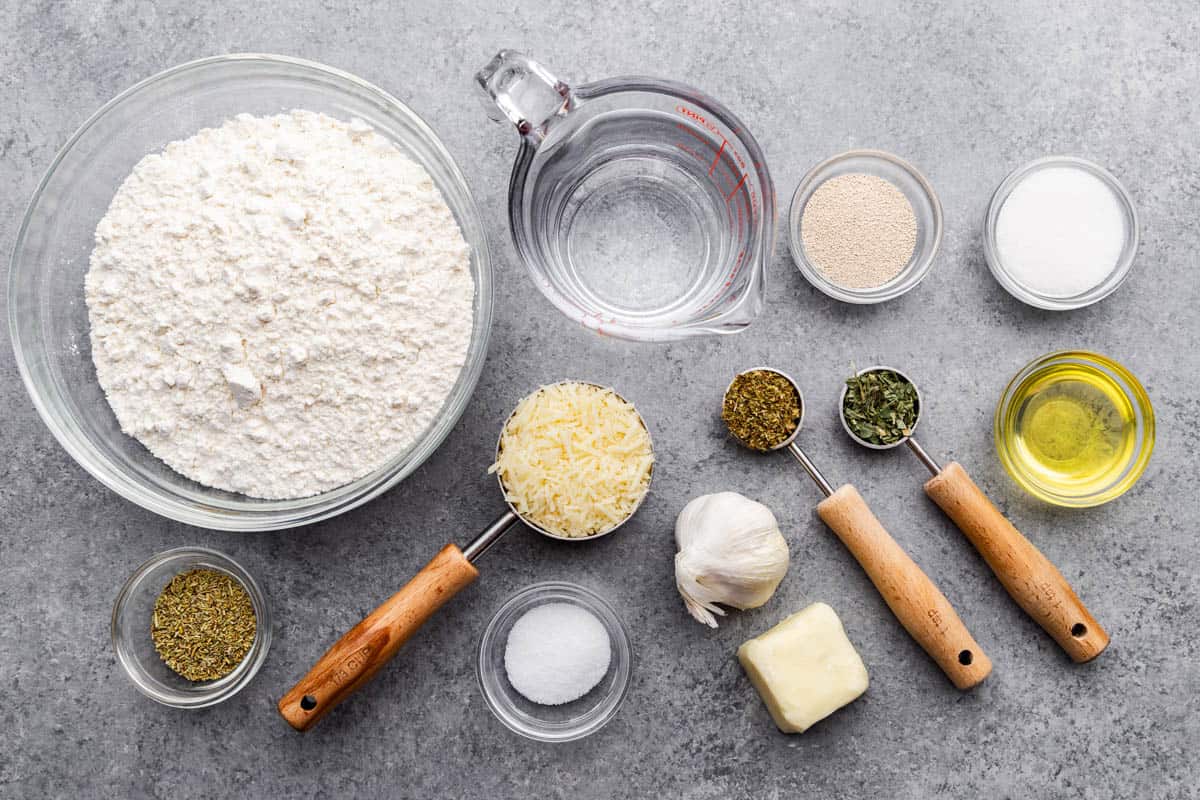
- Instant Dry Yeast: This type of yeast is super easy to work with, but you can also use active dry yeast in the same amount if that’s what you have. Just add about 15 minutes to the rising time.
- Granulated Sugar: This helps the yeast activate.
- Warm Water (100-110°F): Make sure your water is warm, but not too hot. If you don’t have a thermometer, it should feel like a warm bath.
- Dried Herbs (Rosemary, Basil, Oregano): Dried herbs are more concentrated than fresh, so they’re perfect for this bread. If you’d like to use fresh herbs instead, substitute with three times the amount (e.g., 6 teaspoons of fresh rosemary instead of 2 teaspoons dried).
- Garlic: Fresh is best, but if you were to substitute you’d use 1 1/2 teaspoons of garlic powder instead.
- All-Purpose Flour: Start with 2 cups of flour and add more as needed. The dough should be soft and slightly tacky, but not sticky. Avoid over-flouring to keep the bread from becoming too dense.
- Parmesan Cheese: Pre-grated works fine here, but freshly grated is always best.
- Olive Oil: It’s not just to prevent the bread from sticking to the pan. It soaks it up too.
- Butter: A little piece of butter is added on top of the loaf that melts as the bread bakes, creating that rustic cracked look and coating the crust with buttery goodness.
The Right Texture
When it comes to bread making, the amount of flour you add is always an estimate. The actual amount you need can vary due to a variety of factors, including how accurately you measure your ingredients and the humidity in the air. Don’t let that intimidate you though! As long as you know that it is an estimate, you’ll be prepared to go by feel.
You can always add more flour, but you can’t take any away or add more liquids to make up for too much flour. So, add the last portion of flour slowly and gradually. You’re aiming for a dough that is soft and tacky to the touch, but it shouldn’t stick to your fingers or hands.
If you don’t add enough flour in this recipe, your bread might come out looking a little more flat, like a focaccia, rather than a rounded loaf. It’ll still taste great!
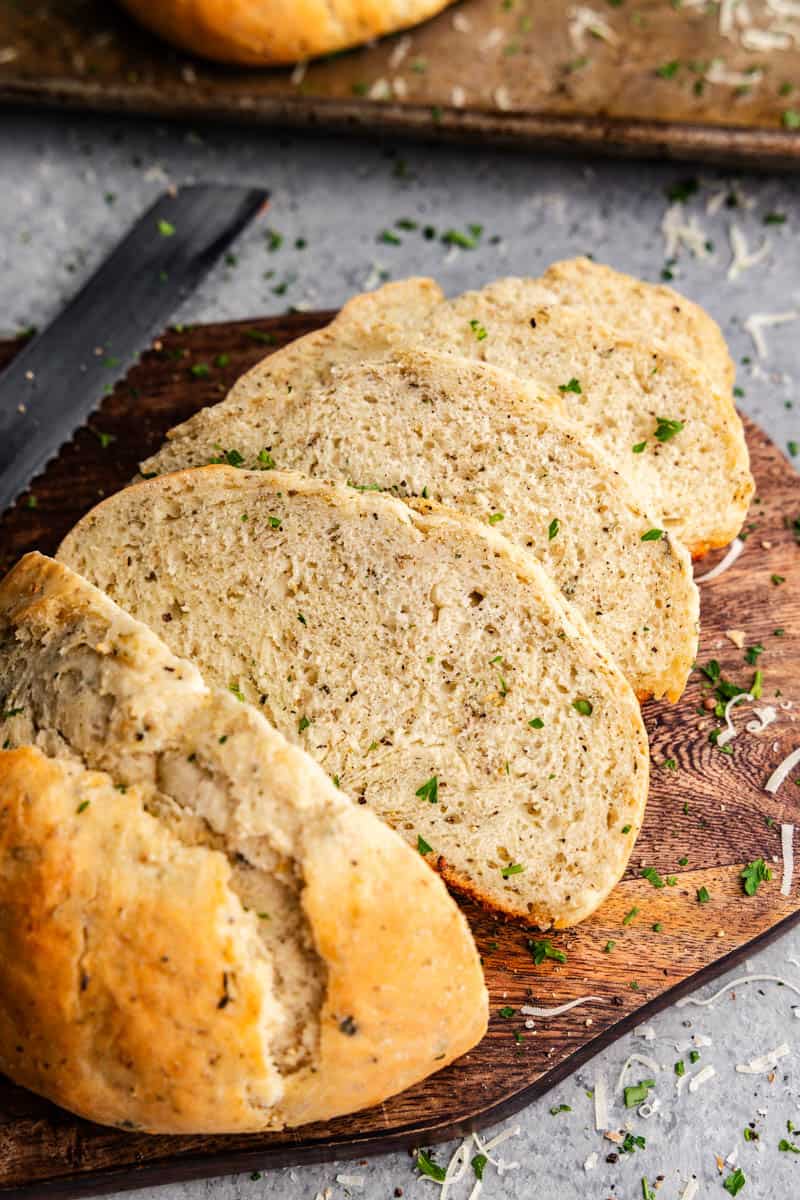
No Stand Mixer? No Problem!
You don’t need a stand mixer to make bread. You can always do it by hand the old fashioned way! Start by mixing the dry ingredients together with a wooden spoon or sturdy spatula. As you add in the flour, keep stirring until the dough starts to come together. Once it becomes too thick to stir, switch to using your hands.
Knead the dough in the bowl or on a lightly floured surface for about 5-7 minutes, or until it’s soft and elastic. If the dough feels too sticky, add a little more flour, a tablespoon at a time, until it’s smooth but still tacky to the touch.
Storage Instructions
Store the bread in an airtight container or resealable plastic bag at room temperature for up to 3 days. Make sure it’s completely cooled before storing to prevent condensation from making the crust soggy.
Great soups to go with your bread . . .
Easy Caprese Soup
25 mins
Cream of Broccoli Soup
35 mins
Best Butternut Squash Soup
30 mins
Creamy Chicken Soup
1 hr 5 mins
Watch the video below where Rachel will walk you through every step of this recipe. Sometimes it helps to have a visual, and we’ve always got you covered with our cooking show. You can find the complete collection of recipes on YouTube, our Facebook Page, or right here on our website with their corresponding recipes.

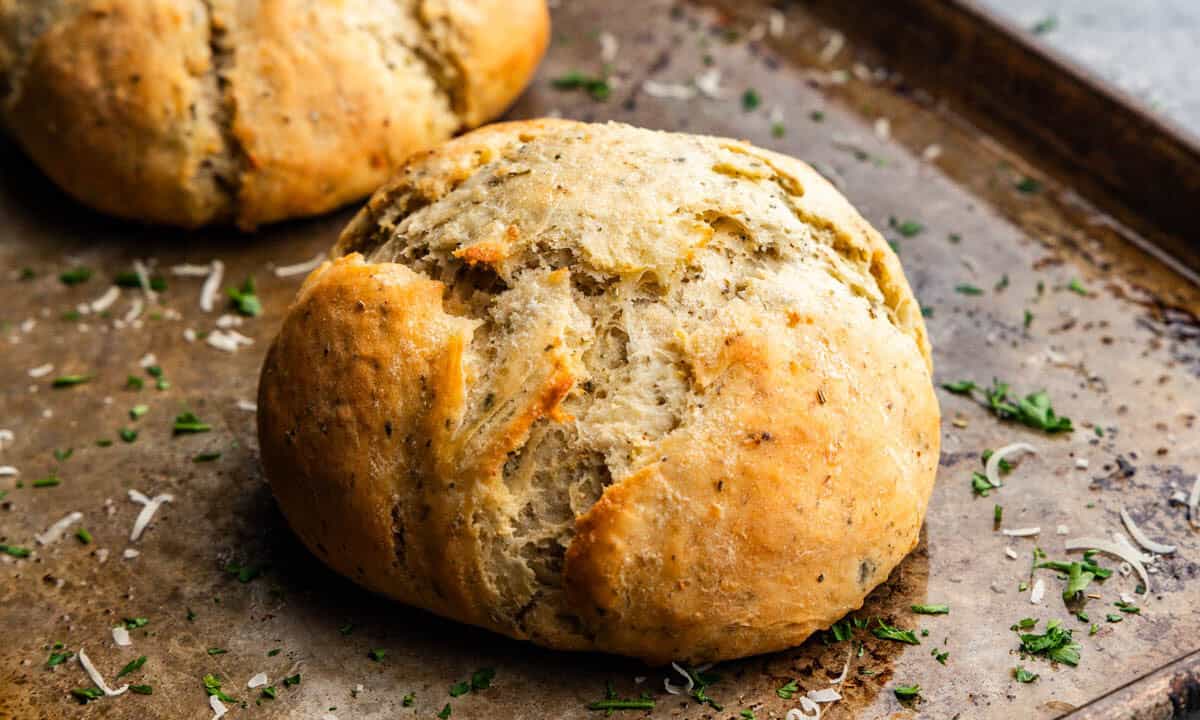

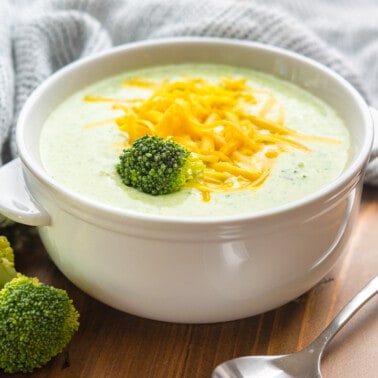
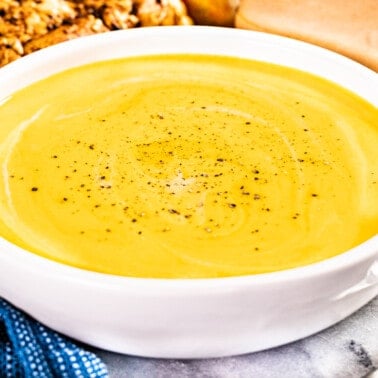
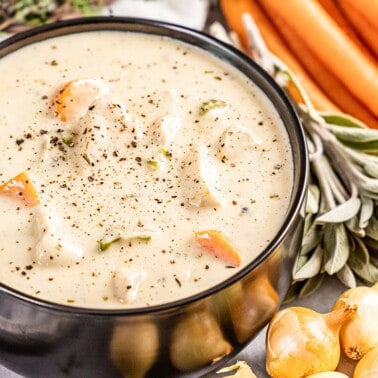
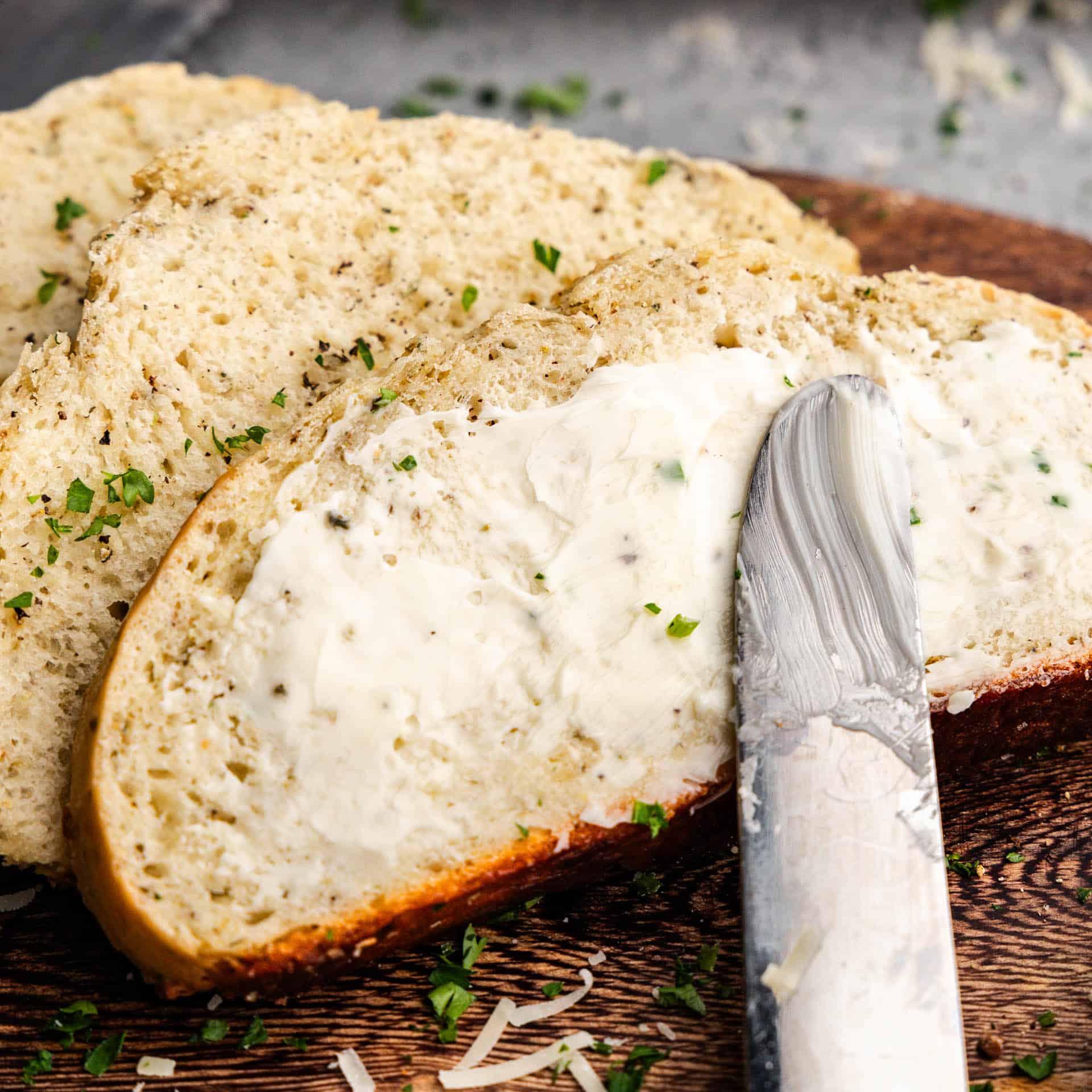
Unbelievably good! This is by far the best homemade bread I have baked! I used minced garlic from the jar and it turned out perfectly! I will hold on to this recipe forever l!
Yummy
Very good!
Don’t really know how to measure 6 cloves of store bought minced garlic
We prefer to freshly mince garlic, but if you want to use store bought: 1 medium-size clove Garlic equals 1 to 1 1/2 teaspoons bottled minced garlic. So for this recipe you would use between 6-9 teaspoons of pre-minced garlic, depending on how garlicky you want it to be.
It should say on the jar how many teaspoons equal 1 clove. I’m pretty sure it’s usually 1/2 teaspoon = 1 clove.
I have made this recipe four times. Everyone loves it. And very easy to make.
Love, love, love the recipe! Works like a charm.
I’m new to baking bread and this is by far the BEST bread I’ve come across. Full of flavour, easy to make and smells amaaazing. I followed the instructions exactly. About to make some again, thanks for the recipe!
I used finely shredded parmesan and the minced garlic from the jar. I also used active dry yeast, so I did let it proof for five minutes before proceeding. Finally, I kept all of the dough together to bake one large loaf in the dutch oven on parchment paper. Oh my ever-loving goodness, this bread was good! The kitchen smelled amazing while it baked and the dutch oven gave it the most beautiful brown crust (that solves Jackie Cannon’s browning issue). My husband and I scarfed it right up with our pasta for dinner. This will be a new favorite at our house!
Did you still put butter on top?
Kristina, how long did it take you to make one loaf in the Dutch oven?
Hi! I am going to make this in a Dutch oven too. Did you preheat it first? Also, did you change the oven temp? Thanks!
Hi! I baked it as one loaf in my dutch oven. 355 F for about 30 minutes. I did preheat it first. I did check on it multiple times though, opening the dutch oven lid so less time might be needed! I didn’t add butter on top but I’m sure that would have been good!
I know this Hass to be delicious can’t wait to try
Thank you! I wanted to know about just doing one, in my cast iron Dutch oven!
Loved this bread recipe. My house smelled amazing.
In the process of making it again for dinner later. For people that wanted it a bit more crusty, I suggest that you bake it for about 18 minutes and than crank the heat to 425 for a few more minutes.
At about 20 minutes, mine still had not browned on top so I turned on the broiler for a few and it browned up perfectly. Watch it closely though. DId not want to crank it up to 425 cause the bottom of the loaf was already browned enough.
Put some raw rice granules on the bottom of your Dutch oven and cover with parchment, then set your dough on the parchment and your loaf bottom won’t burn.
Wow! I’ve never heard of the rice trick. Does it work with other baking pans? —> for example, would it prevent the bottom of the loaf from burning if the parchment paper & rice were used in a regular bread pan — or on a basic sheet pan?
Followed the recipe to the T….
Allowed dough to rise/doubled…all good!
In the oven while baking it spread out more flat…vs rising. Think I Need more flour? Dough was a little sticky when I made two balls.
Yes, if it flattens it’ll still be edible, but it means you didn’t add quite enough flour to give it a strong structure. The amount of flour used when making yeast breads is always an estimate and can vary based on a lot of different factors including the humidity that day. Always go by feel. The dough should be soft and tacky, but not sticky enough that it sticks to your hands.
Even rainy days can impact your bread, so always go by feel and texture. Also, old yeast and altitude can effect the dough.